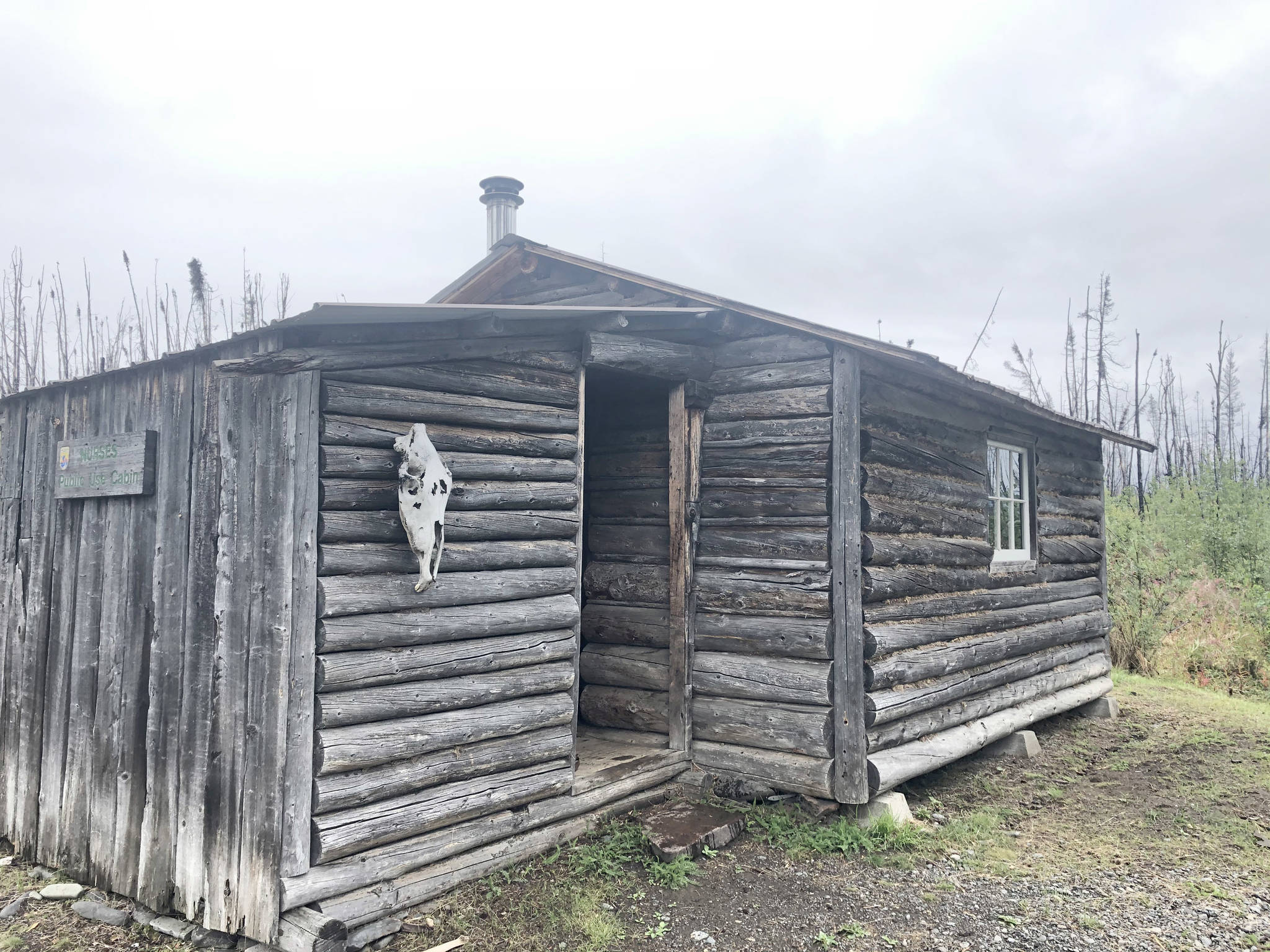A lot of folks don’t appreciate the fine public use cabins managed by the Kenai National Wildlife Refuge. A quick peek at their website (https://www.fws.gov/refuge/kenai/cabin.html) will show 16 cabins. Two are on a first-come, first-serve basis while 14 need to be reserved (https://www.recreation.gov/camping/campgrounds/233317).
What’s not so obvious is that nine of these cabins are historical structures, restored in a very caring and meticulous manner by now-retired ranger Gary Titus and his crew of artisans.
I had a chance late last August to explore four of these historic log cabins along the shores of Tustumena Lake. At 73,500 acres, it is billed as Alaska’s eighth largest lake. It is certainly the largest and deepest lake on the Kenai Peninsula ─ almost 1,000 feet deep!
The eastern headwater of the lake is Tustumena Glacier. Almost 25 miles away, its outlet begins the Kasilof River that flows westward into the Cook Inlet. With cold air coming off the glacier on a warm summer day and a long fetch, the lake is notorious for big waves that can set up in minutes.
So, I made sure to pick a decent weather window for my 70-mile circumnavigation of Tustumena by canoe. Fortunately, the four cabins are reasonably well spaced for a flatwater canoe trip. I chose to go counterclockwise around the lake, taking advantage of Caribou Island to block the worst of the wind and waves off the distant glacier.
The cabins on Caribou Island (Day 1) and Pipe Creek (Day 3) are trapper cabins of unknown origin, almost certainly built in the early 1900s. However, the Big Bay Cabin (Day 2) was built by the famed big game guide, Andrew Berg, in the 1890s. Berg was issued license “No. 1” from the Territory of Alaska, which he held for two decades.
The Finnish immigrant later served as a warden from 1920 to 1921, and worked for the U.S. Biological Survey, the precursor of the U.S. Fish and Wildlife Service, during 1924 to 1936. Two years after Berg’s death in 1939, most of his old stomping grounds became part of the Kenai refuge, back then called the Kenai National Moose Range.
The Nurses Cabin (Day 4) was built in the 1940s by two young women, Vera Liebel and “Doug” Barnsley, who were employed as nurses at the Libby and Libby Cannery, at the Kasilof River mouth. While working at the cannery, they envisioned living in the Tustumena Lake region. With the help of a local trapper, “Windy” Wagner, they built this cabin on the northwest corner of the lake, at the terminus of the George Pollard Horse Trail.
There is a fifth cabin in the northeast corner of Tustumena near the trailhead to yet another public use cabin at Emma Lake. Cabin No. 5 is Andrew Berg’s “home” cabin, built in 1902 and restored by the Kenai refuge in 2003, and now listed in the National Register of Historic Places. This is a wonderful cabin to visit over lunch, as I did on a rainy August day.
These historic cabins made for a truly spectacular (and comfortable!) canoe trip. At that time of the year, the mosquitoes were negligible, but the weather was still warm enough to wear shorts and Crocs. Sockeye were spawning in many of the streams that flow into Tustumena, so brown and black bears were plentiful along the shore even as trumpeter swans were beginning to stage.
If you decide to visit these unique cabins by canoe, check the weather and do NOT cross the open lake under any circumstance. Lethal accidents have happened to many others in much bigger motorboats. I hugged the far eastern shore when I crossed, but the submerged glacial outwash plain was so shallow that it forced even my canoe further out into the open water than I cared to be.
Also, be prepared to sleep anywhere at any time, regardless of your cabin reservations, if the weather turns foul. That glacial lake is very cold and there’s little room for error in a canoe. Still, this is one heck of a great paddle!
Dr. John Morton was the supervisory biologist at Kenai National Wildlife Refuge from 2002 to 2020. Now retired from the U.S. Fish and Wildlife Service, he continues to live and play on the Kenai Peninsula. Find more Refuge Notebook articles (1999–present) at https://www.fws.gov/refuge/Kenai/community/refuge_notebook.html.
By JOHN MORTON
Alaska Wildlife Alliance

